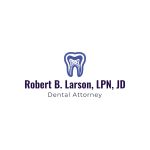- Myth 1: Brushing Harder Cleans Better
- Myth 2: Sugar Is the Only Cause of Cavities
- Myth 3: You Don’t Need to Floss If You’re Brushing
- Myth 4: Whitening Toothpaste Is Bad for Your Teeth
- Myth 5: You Don’t Need to See the Dentist Unless It Hurts
Myth 1: Brushing Harder Cleans Better
One of the most common misconceptions about oral health is that brushing harder leads to cleaner teeth. In reality, brushing too hard can actually cause more harm than good. It can wear down your tooth enamel and lead to gum recession, which can result in sensitivity and other long-term dental issues. The key to effective brushing is gentle, consistent strokes and using a toothbrush with soft bristles to protect both your teeth and gums.
Myth 2: Sugar Is the Only Cause of Cavities
While it's true that sugar plays a significant role in tooth decay, it's not the only culprit. Cavities form when bacteria in the mouth feed on sugars and produce acid that erodes tooth enamel. However, other factors like poor oral hygiene, a lack of regular brushing and flossing, and even genetics can also contribute to cavities. A balanced diet, good oral hygiene habits, and regular dental checkups can help prevent cavities, regardless of sugar consumption.
Myth 3: You Don’t Need to Floss If You’re Brushing
Another myth that many people believe is that brushing alone is enough to maintain optimal oral health. In fact, brushing only cleans the surfaces of your teeth, but it doesn’t reach the spaces between your teeth where plaque and food particles often get trapped. Flossing is essential to remove debris from between teeth and along the gumline, which can prevent gum disease, cavities, and bad breath. Incorporating flossing into your daily routine is a crucial part of maintaining a healthy mouth.
Myth 4: Whitening Toothpaste Is Bad for Your Teeth
Many people avoid whitening toothpaste because they believe it will damage their teeth. However, most whitening toothpastes are safe to use and can effectively remove surface stains caused by food and beverages like coffee and tea. The key is to choose a whitening toothpaste that contains the American Dental Association (ADA) Seal of Acceptance, which ensures it’s both effective and safe. Overuse of abrasive whitening products, however, can wear down enamel, so it’s important to follow the manufacturer’s instructions and consult your dentist if you have concerns.
Myth 5: You Don’t Need to See the Dentist Unless It Hurts
Many people wait until they experience pain before visiting the dentist, but this can lead to more serious dental issues. Dental problems like cavities, gum disease, and even oral cancer may not cause noticeable symptoms until they’ve progressed. Regular checkups with your dentist are essential for catching issues early, preventing further damage, and maintaining optimal oral health. It’s recommended to see your dentist every six months for routine exams and cleanings to ensure your teeth and gums stay healthy.
Debunking these common myths about oral health can help you make informed decisions about your dental care. By practicing proper brushing, flossing, and visiting the dentist regularly, you can maintain a healthy smile for years to come. For more tips and professional recommendations, visit Dentistry Toothtruth.







 Smiles West - Torrance4.0 (118 review)
Smiles West - Torrance4.0 (118 review) Robert B Larson, LPN, JD - Dental Attorney4.0 (5 review)
Robert B Larson, LPN, JD - Dental Attorney4.0 (5 review) Southern New Hampshire Orthodontics & Pediatric Dentistry5.0 (2 review)
Southern New Hampshire Orthodontics & Pediatric Dentistry5.0 (2 review) Smith Family Dentistry WV4.0 (96 review)
Smith Family Dentistry WV4.0 (96 review) Saluté Dental - Woodbury5.0 (1513 review)
Saluté Dental - Woodbury5.0 (1513 review) Dr. Amy James & Associates Orthodontists4.0 (179 review)
Dr. Amy James & Associates Orthodontists4.0 (179 review) The Importance of Oral Health Education During Pregnancy for a Healthy Pregnancy
The Importance of Oral Health Education During Pregnancy for a Healthy Pregnancy Best Tips for Brushing Your Teeth Properly for Healthy Gums: Essential Techniques for Oral Health
Best Tips for Brushing Your Teeth Properly for Healthy Gums: Essential Techniques for Oral Health Why Skipping Dental Checkups Can Lead to Bigger Oral Health Problems
Why Skipping Dental Checkups Can Lead to Bigger Oral Health Problems Advantages of Porcelain Dental Restorations
Advantages of Porcelain Dental Restorations How Can Diabetes Cause Tooth and Gum Problems? Preventing and Managing Oral Health Issues
How Can Diabetes Cause Tooth and Gum Problems? Preventing and Managing Oral Health Issues Healthy Habits for Promoting Good Oral Health and Hygiene: Tips for a Healthy Smile
Healthy Habits for Promoting Good Oral Health and Hygiene: Tips for a Healthy Smile